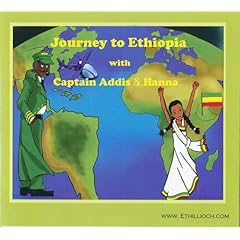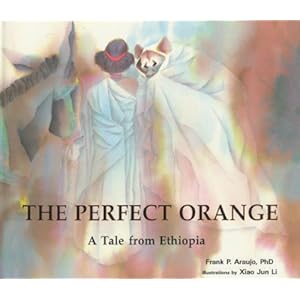ORIGINALLY PUBLISHED BY DAISYJ ON
THE WAYFARER
I was asked this question and they liked my answer so much that I thought that maybe it would be good to actually do a list on this. Ok, I love lists, call me crazy. I can't import an excel spreadsheet here or i would. Here are my thoughts on shopping, buying and what to do while on your adoption trip to Ethiopia. Keep in mind we were there for 2 weeks and traveled with our two older daughters 9, 10 to pick up our two sons, at the time they were both 3. We stayed at a guest house and it was at the beginning of the new ban on going out in public with your kids. In order to get out you may like to take turns going places like shopping and museums. We did this and are very happy we did because otherwise we would not have gotten to see so much of our kids heritage and culture.
Q. Do you have anywhere that you recommend going or seeing while
there? This can be anything! Restaurants, shopping, extended trips
outside of Addis Ababa.
WE WOULD RECOMMEND FOR SHOPPING THE HAILE SELASE MARKET. IT IS FIXED
PRICE HAS GREAT SELECTION AND IS REASONABLE IN COST. NEAR THERE IS A
HANDICRAFT STORE AND IT IS ALSO REASONABLE and HAS A TON OF REALLY COOL
STUFF, hand painted and carved mancala boards, beads, bells, carved boxes, drums, stringed instruments, etc........ We would recommend this as opposed to a mall or market. Many families only have one day to shop and this is a great one stop shop for all sorts of stuff. The mall is very expensive, the market is all barter and as we did go to one and bartered down to what seemed like a lot and they really would not go down more, we paid much less at Haile Selasse fixed price market and their stuff was better in my opinion. Larger selection too, and they let you shop instead of pressuring you to buy what they hope you will get. At Haile Selasse market we saw that they had: baskets, clothes and linens, books, jewlery, wooden and metal crosses, wool and wire animals, wooden animals, etc..... Go to a grocery store on the way to somewhere, you can buy coffee at any grocery, harrar is the variety you are looking for. You can also buy some snacks and fruit to take to the orphanage and to the guest house to eat. Our boys could not eat enough bananas and milk, so I kept going out for those things.
BE SURE TO GO TO ENTOTO. THERE IS A LARGE ORTHODOX CHURCH THERE AND IT
IS GREAT TO TAKE PHOTOS OF, YOU CAN ALSO TOUR THE FIRST HOME OF
MENALIK 2. There is also a museum in the cost of seeing the palace. It is not very big or interesting, but see it, you pay for it with the emperor's home cost. It was about 20 birr each. They let the boys in free. The view of Addis is amazing if the day is clear, so we heard and can believe it. But it was cloudy and fog enshrouded the day we were there. In my opinion it made it all the more wondrous with the mist and the chants from the church and the old barren buildings of the Emperor's first home. It was awesome!!!! THE DRIVE THERE REALLY LETS YOU SEE ADDIS AND THE COUNTRY SIDE AND HOW PEOPLE LIVE. WHILE YOU ARE OVER THERE GO TO THE WEAVERS MARKET OF THE LEPER COLONY. NO YOU WON'T CATCH IT. BUT THEY DO WEAVINGS TO SELF SUPPORT AND THEY HAVE THE BEST VARIETY AND GOOD QUALITY. YOU CAN GET CLOTHING AND LINENS HERE. If you can make it it is better than Haile Selase market for clothes and linens. You don't have to tour, you can just go to the store. I think it was fixed price too. You can go to Entoto together as it is "out of town".
WE ALSO WENT TO WALISOU (spelling?) HOT SPRINGS. There are a few different hot springs but this was reported to be the nicest, it is called walisou so if you need to ask about it and they don't know where the "hot springs" is tell them walisou resort. IT IS WELL WORTH THE TRIP. A 2 HOUR DRIVE ONE WAY. Get a private driver in a van so you can spread out if there are more than 3 of you. I think all day the driver and van cost us 80 birr. THEN YOU GO TO THIS really neat RESORT AND THEY HAVE A
REALLY NICE RESTAURANT AND HOTEL AND YOU CAN SWIM IN THE WARM WATER
POOL. THEY CHANGE THE WATER ON THURSDAYS SO THAT IS A GOOD DAY TO GO
BUT THE POOL WILL HALF FULL. FRI -SUN IT FULL OF water and UPPER CLASS FROM THE CITY AND NOT A GOOD IDEA FOR YOU TO GO WITH YOUR KIDS DUE TO THE NEW
RULES. BUT GREAT DURING THE WEEK. GOOD TRIP TO SEE THE COUNTRY AND
TRADITIONAL LIVING. They have monkeys there on site too. A really charming resort area. The town is very typical and poor. The contrast is truly remarkable and moving. A note on swimming. Ethiopian kids are not familiar with swimming and modesty is a big deal. So, taking off their shirts and "bathing" with a bunch of people may be a bit more than some of them can handle. Ours were freaked out by this and it took a good hour to get them to just try it. Then it was fun, sort of. This is also "out of town" so you can go together.
>
IF YOU CAN MAKE A MUSEUM TRIP THE NATIONAL MUSEUM IS THE BEST
(PHOTOS OK). This is where they have the throne of Haile selasse and the remains of Lucy and some other archaeological items of interest.ETHNOGRAPHIC Museum IS NEXT BEST (NO PHOTOS). Here they have a collection of money, musical instruments, religious paintings and a bit on several of the tribal groups. It is really interesting, especially the main floor. The grounds are a University and it is a very nice place to walk around too. You can take a tour of each with a guide or do it yourself. We suggest the guide. This is one of those things you take turns doing because you can't take your kids, and having taken them to one just before the rule, you don't really WANT to. :)
TAKE A CAR TOUR OF THE CITY AND TAKE PHOTOS OF ALL THE BIG MONUMENTS. This you can do together, just don't let your kids out of the car. Get a van if you have many of you, it is more comfortable for the long drive. The city is so diverse, you can see so much. Even if you get to drive through Merkato, that is an experience worth doing. Get photos of the Lion Of Judah, the stadium, the millennium plaza, etc.... Your driver will know where to take you.
Q. What do you wish you had bought? Or are REALLY glad you did?
we bought outfits for the boys in 3 sizes. We also bought a
wooden carved box and filled it with little things that represent
their country. (carved lion, bumper sticker that says Lion of Judah, bell, zebra, giraffe, drum, cross). I wish we had brought home a medium injera
basket. For gifts we highly recommend small carved animals, the carved
giraffes, the metal and wooden crosses as larger items and jewelry and
the wire and wool animals. We did not get enough. Small baskets make nice gift boxes for these items. I wish we had bought some of the wooden crosses and more metal ones and more giraffes. We bought a lot of coffee and that is good, but not enough. Harrar is the variety you are looking for. You can get it in the grocery and shops. We also bought hand carved and painted mancala boards, popular game but called something else, at the handicraft store you
can buy pretty painted ones. Your boys or girls may have played this game and
may be good at it and like to play together and teach you. You buy the
beads separately and you can pick. We HIGHLY recommend the Haile
Selasse market it is fixed prices but they were better than the market
variety stores on prices and variety. It is also one stop shopping if
you need that. We also went to the Christian book store and bought
some books in English and Amharic, wish we got more, and wished we had
found a kids cd, they do have them but are not plentiful. Some of the other things we bought are:
Bible, t shirts, bumper stickers, egg basket ( I collect them ), folding stool, dresses for the girls, table runner and napkins (my onespontaneous buy which I questioned myself for and am VERY happy I did buy it), jewelry, carved wooden animals, metal crosses, small baskets for gift boxes for some gifts, wire wool animals, books of stories, music one Christian Ethiopian praise and worship, one secular "Abugida", traditional (I LOVE Ethiopian music!), kids stories from the Bible, coffee, some snacks, cinnamon tea, ginger tea, hibiscus tea, black tea. We bought the boys each a soccer ball. A real one, not a blow up one; Decorative dolls, shawls.
You can go to the Leper colony near Entoto. They have a weaving business and shop there. The variety is best in the city and best cost, plus it goes to help them survive, a good cause! Think shirts, linens, shawls, etc..
A note on shopping from Matt (IAN parent):
The DVD's that are sold in front of the Friendship Mall for 20 Birr ($1.50) work at home. :) In case you want to add to your New Release collection.
- If you need to buy something and you think your getting ripped off have someone at your guest house who is Ethiopian buy it for you. I needed a 4GB USB Flash Drive and they were quoting be 1500 Birr ($120). I knew that was ridiculous. Yonathon went up there and got it for 450 Birr ($35). Sometimes they have a pause when you ask the price, when they do that just walk away.
- The restaurant LimeTree has a great pizza... and the ladies seemed to love the Lentil Soup there as well.This is all I can think of right now.










 Journey to Ethiopia with Captain Addis and Hanna
Journey to Ethiopia with Captain Addis and Hanna Our First Amharic Words
Our First Amharic Words














